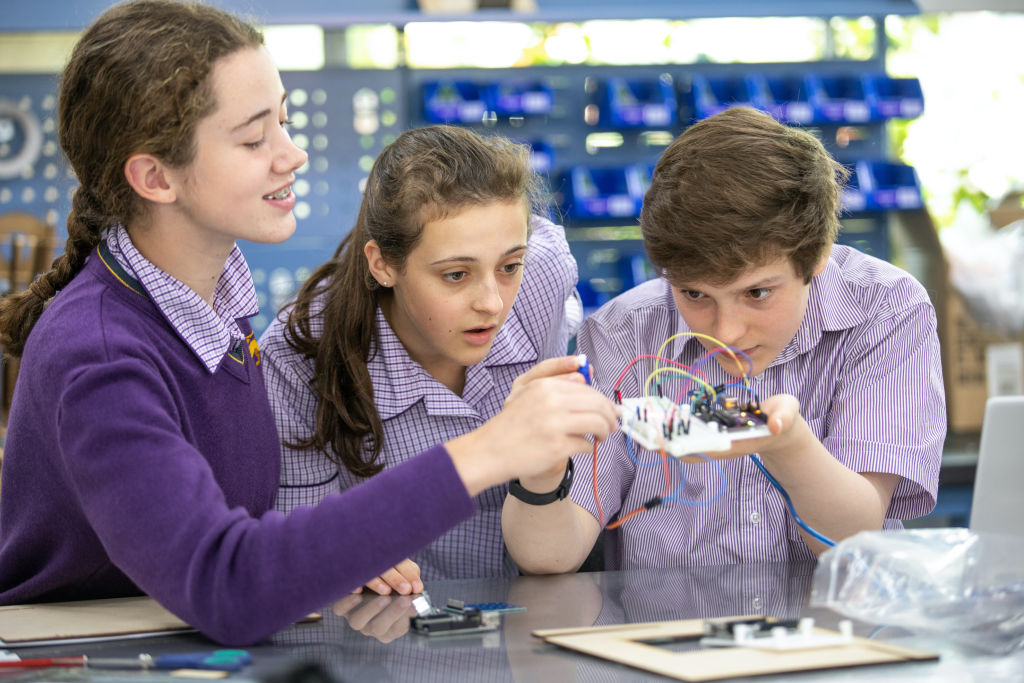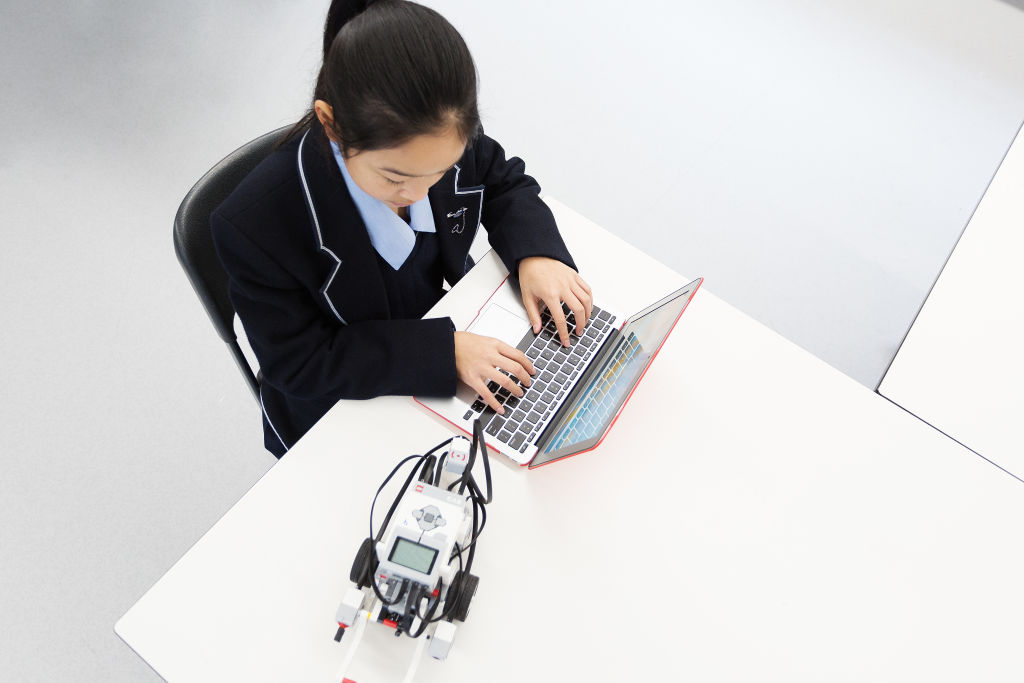The changing role of technology in the classroom

Micah Wilkins doesn’t remember the acronym STEM being used in his school days, which ended in the early 2000s, around the time it was popularised. Now, as head of digital learning and innovation at Camberwell Girls Grammar School, the catch-all for science, technology, engineering, and mathematics is part of his everyday world.
Yet for all of the advances made in how science and technology is taught in the classroom, the principle behind STEM learning remains the same as when Wilkins took on an elective called electronics in year 9 and used a soldering iron, among other tools, to construct a small recording device. (He laughs, recalling that his never actually worked, while another classmate’s exploded.)
“The thinking then is not dissimilar to what we’re trying to get our students to do now,” he says. “We’re working with real-world problems; we’re using tools of the trade; we are asking big questions and being curious with our learning.
“It’s that whole process of problem-solving, tinkering, playing, taking risks and trying different things to see if they work. That’s the essence of what we’re trying to do in STEM programs at school.”

Dean Pearman, head of digital learning and practice at Wesley College, agrees that for all of the wonderful learning environments that school Makerspaces and STEM laboratories now offer students, to see them as purely the domain of the technologically minded is to miss a crucial part of the picture.
At Wesley, digital technology studies sit under the holistic-approach-to-learning umbrella that envelops every class and subject, from prep to year 12. It recognises the importance of technology in the life of the community and is used not simply to design and build amazing things but to embed the necessary skills in cyber safety and in digital privacy and wellbeing that will help young people thrive after walking out through the school gate for the last time.
“There are misconceptions around STEM and what it means,” Pearman says. “When you start to suggest that you have to be innately good at technology to be involved in STEM spaces and labs, you’re missing a whole range of other avenues in which students can work in that very same space.
“Our approach is, ‘You’re a maker’‚ you can be a baker, a fashion designer, an interior designer. It’s not just pigeonholing students to use technology; it’s how they think and solve problems that we’re most interested in.”
At CGGS, a fleet of robots including NAO, DASH, EV3s and SPHERO help students learn coding, which Wilkins simplifies as “the language that sits behind all the web interfaces we see, all the apps we use and many of the games we play”. Yet behind the otherworldliness of the “bots” are much broader learning opportunities.
“Through robotics we ask, ‘How are we developing those important transferable skills such as critical thinking and creativity? How are we developing teamwork and organisation?’
“Doing STEM for us is, yes, you will learn some of those techy skills that are important. But underpinning that is a way of seeing and navigating the world that is more important,” says Wilkins.
“Many schools can talk about their laser cutters and 3D printers, their NAO bots and SPHEROs, but on the ground, what does it actually look like, and what does it mean for learning?
“For us, it’s about developing the thinking of our students.”
At Wesley, the remote learning experience of 2020 underscored for Pearman that technology at its core is a building material, and that young people will find meaningful ways to use it no matter what hurdles appear in their path. The broader benefits make the STEM experience all the more compelling.
“When you have been through our Makerspace or STEM lab during your educational journey at Wesley‚ to solve problems and be exposed to a design-thinking process will set our students up for when they go into the workforce,” Pearman says.
This article featured in Domain Review’s Independent Schools Guide.
We recommend
We thought you might like
States
Capital Cities
Capital Cities - Rentals
Popular Areas
Allhomes
More







